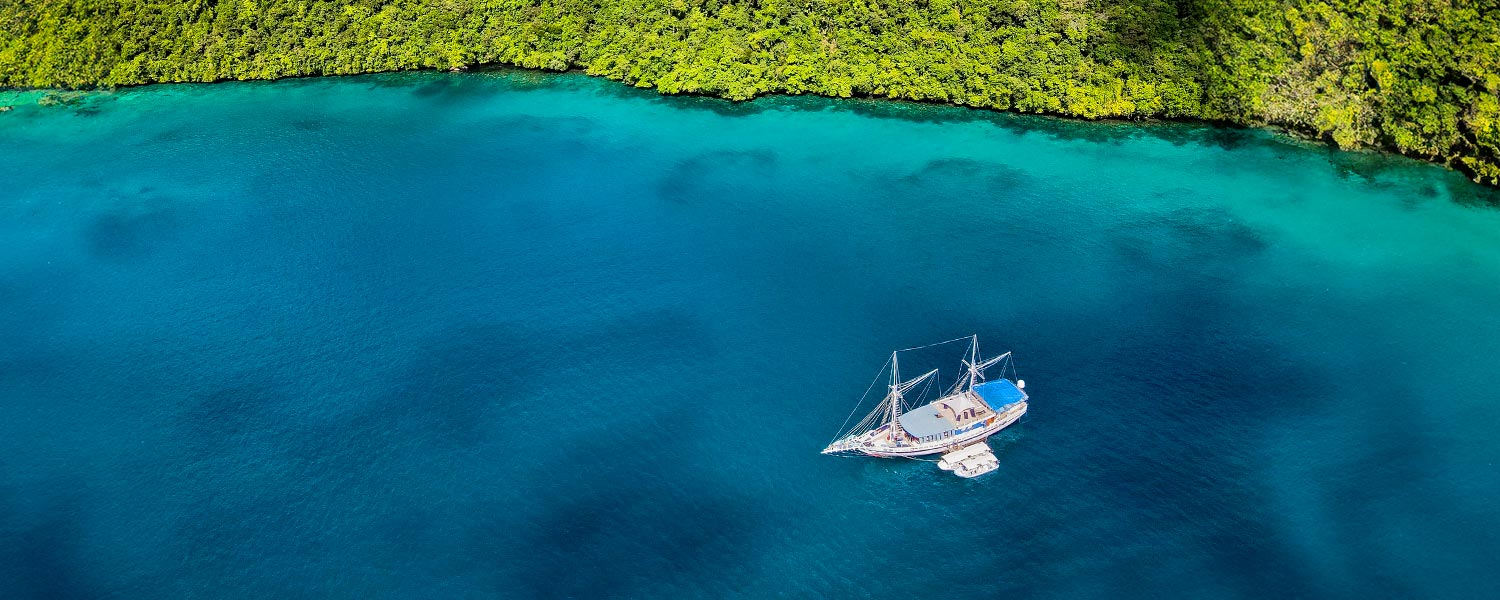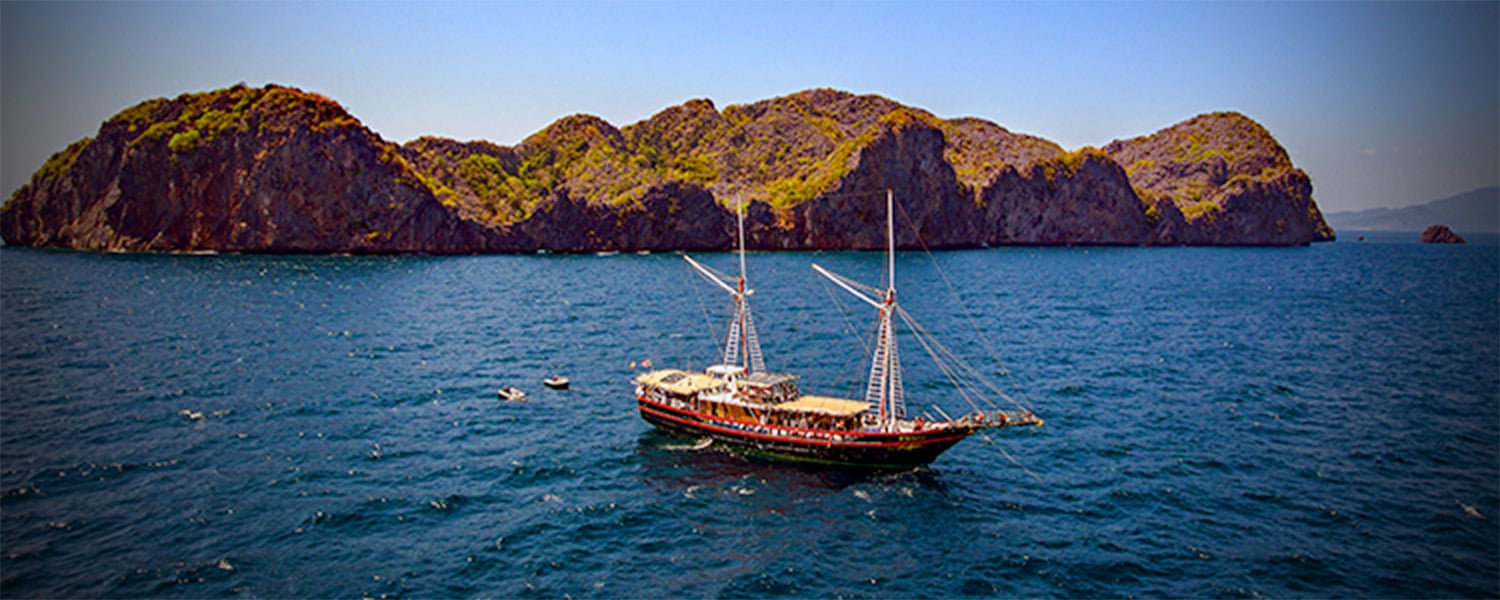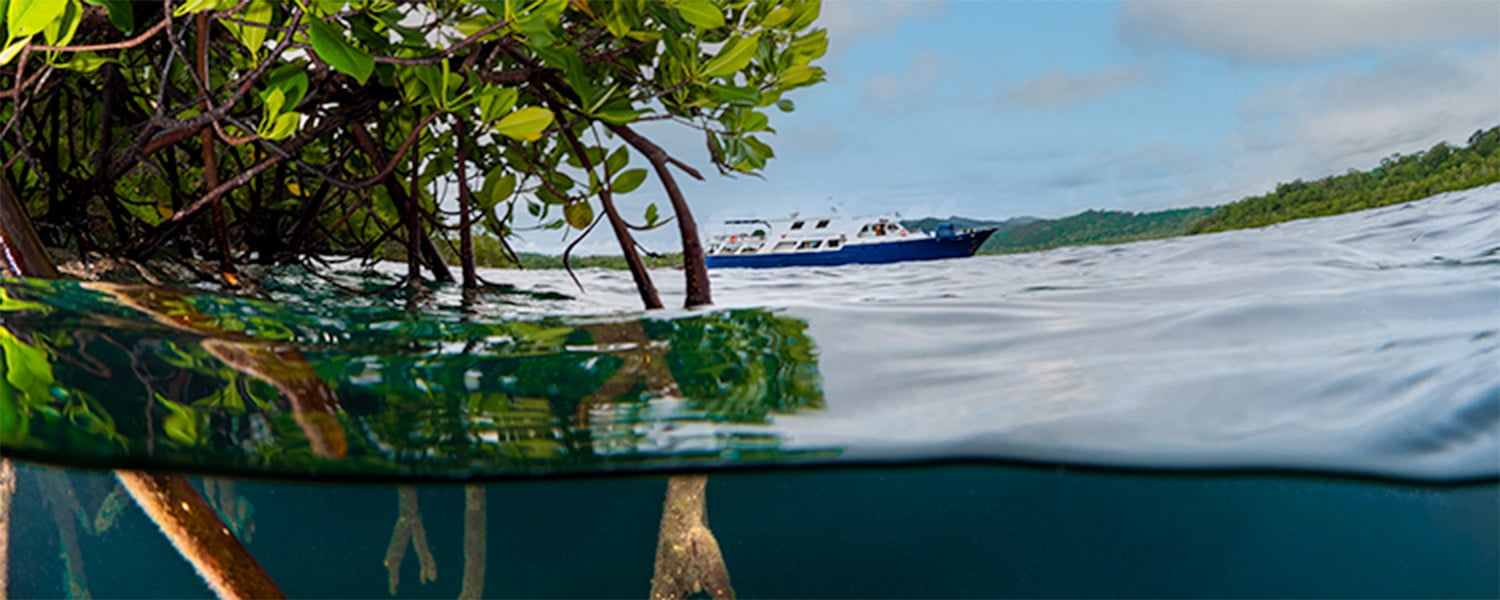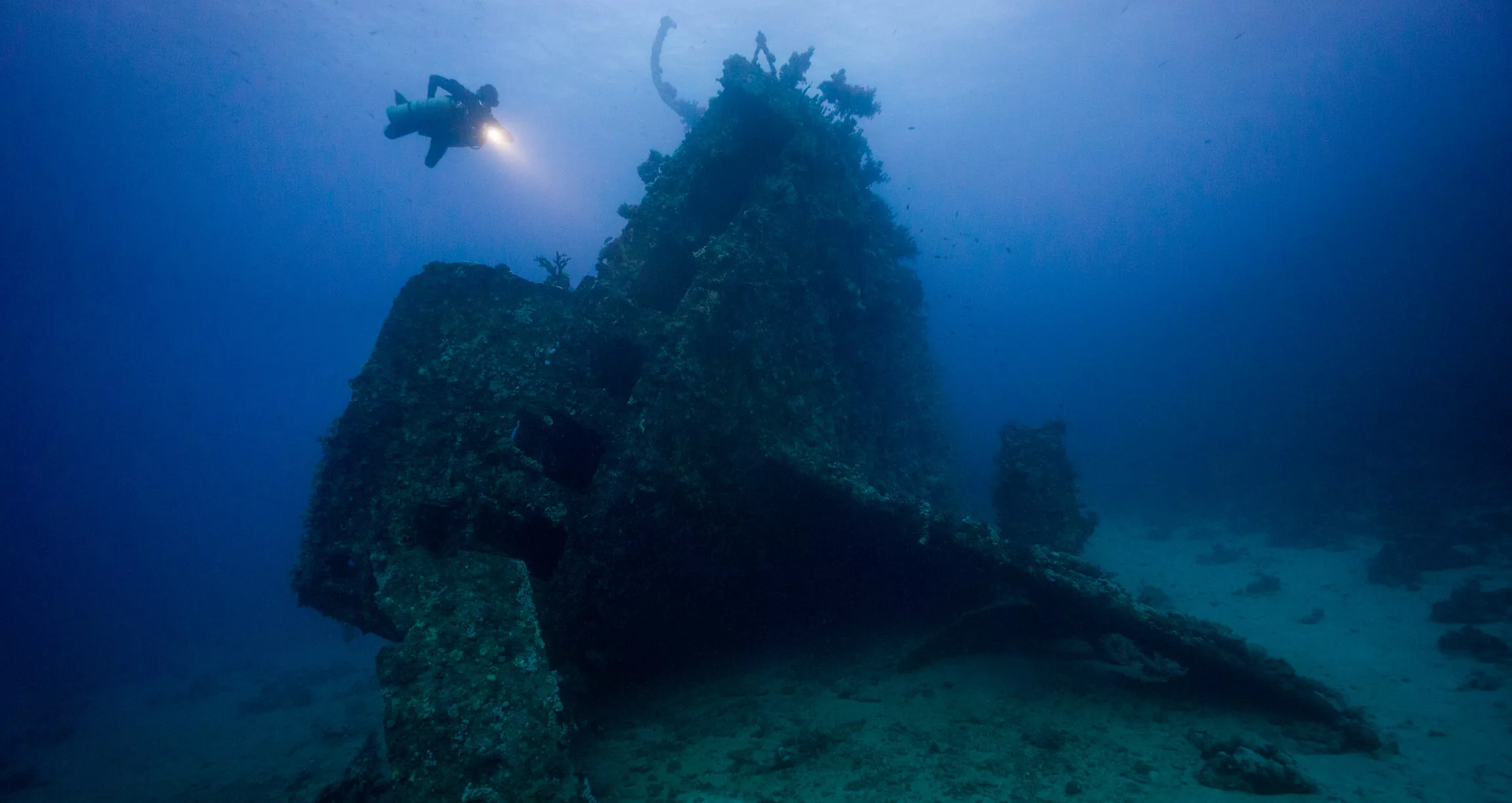The Bahamas may be best known for high adrenalin shark diving, but there is much more to see in this Caribbean paradise! The perfect itinerary to discover Bahamian wonders are our 7 and 10 night Wrecks, Blue Holes and Sharks itineraries. As the name suggests, these itineraries have some exciting shark diving at Tiger Beach. But, there are also some amazing wreck dives on Hollywood props, as well as something a little more unusual. The Blue Holes of the Bahamas.
What is a Blue Hole?
A blue hole is a large underwater cavern, or sinkhole, found either inland or in the ocean. For the most part they are more or less circular and open at the surface. They tend to be quite easy to spot from the air due to the colour difference; the inside of the hole tends to be a darker blue than the surrounding waters. Hence the name, “blue” hole!

Most blue holes can be found around Central America and the Caribbean region. This is due to the geological environment, where they initially formed as sink holes on land. However, you can also find them in other places like Palau, Malta, and the Red Sea. The deepest blue hole in the world, Dragon Hole, is in the South China Sea.

Their discovery and exploration is relatively recent and scientific study really only started at the turn of the 21st century. The holes in Belize are the most dived but, slowly and surely, the Blue Holes of the Bahamas are dethroning them as the best known.
Why Dive a Blue Hole?
Diving into a blue hole is a special experience. Most of them boast beautiful geological formations, with some even leading to cave systems just for added excitement. They are not particularly kind to sea life as most of them have poor circulation. This means there is often a mix between fresh and saltwater, as well as poor sunlight. For extra unpleasantness to wildlife, they are also often anoxic (lacking oxygen).

Nevertheless Mother Nature always finds a way and many bacteria manage to thrive in the harsh environment. The holes will also often feature unique marine life such as white algae, hanging like cobwebs.
However, the main reason we dive blue holes is for the magical feeling when you reach the edge from above. You arrive at the rim and see the seafloor dropping to unknown (or certainly invisible) depths. It is really hard to resist the temptation to just plunge.
Blue Holes of the Bahamas – King Kong
There are other, currently more well-known, blue holes; like The Great Blue Hole in Belize’s Great Barrier Reef, but The Bahamas beat them all! Andros is called the ‘Blue Hole Capital of the World’. On top of this, the second deepest blue hole in the world, Dean’s Blue Hole, is also located in The Bahamas on Long Island.

On our Bahamas itineraries, we visit King Kong’s Blue Hole, better known as the “Great Blue Hole” in Andros. King Kong’s Blue Hole is the second deepest ocean blue hole in the Bahamas. The entrance to Kong is at 12 metres and, because it’s connected to other holes inland, it is affected by the tides – which provides a rather weird feeling. We make sure we dive it at the right time as the blue hole acts as a massive siphon “blowing” and “sucking” with the tides.
Blue Holes of the Bahamas – Lost Blue Hole
Another blue hole we visit during our 10-night trips is the Lost Blue Hole in Nassau. This site is incredible and absolutely unique. You descend to the seafloor (10 – 12m) and swim over a sandy bottom covered in seagrass. This is an excellent place to find green sea turtles and search for marine life that only live in the seagrass (jawfish, gobies, blennies, seahorses, nudibranch, etc.). You then will reach this huge hole.
Lost Blue Hole is 25m in diameter, with vertical walls just plunging into the depths, over 90m below. It’s just mind-blowing to see this geological formation. The water temperature is colder in the hole and the visibility drops to less than 5m (take a torch). Because there is both sea and freshwater, the water colours inside are a much darker blue than many holes.

As you descend, the sheltered walls provide a protected home for a large variety of marine species. These include nurse sharks, reef sharks, angelfish, snapper, amberjacks, yellowtails, manta rays, morays, and turtles. From May to early August, a large school of up to a 100 blacknose sharks also congregate in this hole. Blacknose sharks are small, less than 1m, and come to the Lost Blue Hole to breed. It is hard to see them from the top of the hole but as you drop down in you can look up and see them circling above you!
We can safely say there are still a lot of blue holes to be discovered and that they are among the last places on earth to be explored!
Come and join us on Bahamas Master and explore these magnificent yet unknown wonders of The Bahamas.



